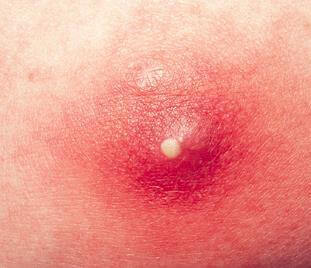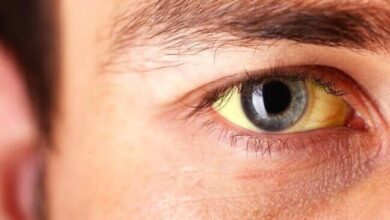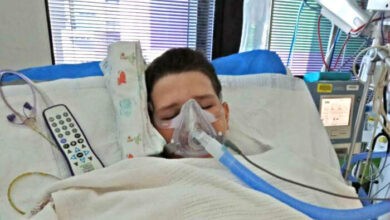Types of Abscesses
Overview I Sites I Causes I Mode of infections I Types I Composition of pus I Clinical features I Investigations I Treatment I Prevention

It is the localized collection of pus in a confined tissue space lined by a pyogenic membrane. An abscess is often easy to feel by touch. The majority of the abscess is caused by infections. Carbuncles and boils are the types of abscess that often involves hair follicles, with carbuncle being larger. In the main article, you will get to know about different types of abscesses.
According to (anonymous), circa 1500 BC
if you examine a swelling of pus in any limb of a man and you find it (with) its head raised and it is enclosed and it is rounded, you shall say concerning it “a swelling of pus, and illness which will be treated by me with the knife treatment, there is something in it like mucous. Something comes forth like wax. it makes a pocket. if anything (remains) in its pocket, it reoccurs”.
Sites of abscess
External site
- Finger and hand
- Neck
- axilla
- Breast
- Foot, Thigh
- Abdominal wall
- A dental abscess, Tonsillar abscess, or other abscesses in the oral cavity
Internal abscess
- Abdominal-sub phrenic, pelvic, paracolic, amoebic liver abscess, splenic abscess, pancreatic abscess
- Perinephric abscess
- Retroperitoneal abscess
- Lung abscess
- Brain abscess
- Retropharyngeal abscess
Bacteria causing abscess
- Staphylococcus aureus
- Steptococcus pyogens
- Gram negative bacteria (E.choli, psuedomonnas)
- Anaerobes
Mode of infections
- Direct
- Lymphatics
- Hematogenous
- xtension from adjacent tissue
Types of Abscesses
Different types of abscesses are discussed below:
Pyogenic Abscess:
It is a localized collection of pus in a cavity lined by granulation tissue and covered by a pyogenic membrane. it contains pus loculi. it is mainly caused by Staphylococcus aureus and Streptococcus
Pyaemic abscess
these are generally multiple in number. either develop simultaneously or a number of them crop up in succession only after one has been incised. this condition results when infective emboli circulating in the blood lodges in different parts of the body and give rise to multiple abscesses. the peculiarities of these abscesses are that they commonly occur in the subfascial plane and do not present the feature of a common abscess. these are no recreating in nature i.e acute features are absent but constitutional disturbance is tremendous with high fever, rigor, and toxemia. Another common type of abscesses.
compsition of pus
- ead WBC
- Multiplying bacteria
- Toxin
- Necrotic materials
Clinical features
Symptoms
signs
- swelling, redness, raised local temperature.
- soft smooth, tender with pitting edema.
- Brawny induration in the surrounding area.
- Visible pus point
- Fluctuation test positive
features if formed abscess
- Visible pus
- Pointing tenderness
- Fluctuation
- Excruciating pain
- Differential diagnosis
- Aneurysm
- Soft tissue tumors
- Hematoma
Conformation
By needle aspiration
Investigaton
- CBC
- urine sugar and blood sugar to rule our diabetes
- USG of part of the abdomen or other region is done when required
- hest x-ray in case of lung abscess
- Gallium isotopes scan is very useful.
- Ct scan or MRI is done is the case of brain and thoracic abscess.
Treatment
Incision and drainage followed by antibiotics
Incision: Hilton’s method of draining and abscess
Complication of abscess
- Bacteraemia, septicemia, and pyemia
- Multiple abscess formation
- Metastatic abscess
- Antibioma if treated by Antibiotics
- Burst leads to ulcer, sinus, and fistula
Cold abscess
It is different types of abscesses with no signs of acute inflammation (redness, warmth, and tenderness). It occurs due to caseating necrosis of tuberculous lymph node.
clinical feature:
- It is painless smooth, fluctuant and non-trans-illuminating.
- edema, brawny indurations is absent.
- The common site is the neck, vertebra, axilla.
Treatment
1. The cold abscess is not the primary culprit. underlying tuberculosis is the cause. Therefore the treatment is for underlying tuberculosis by use of antitubercular drugs.
2. The aspirant is done in an antigravity fashion in a zig-zag method as to wvoid fistula formation from continous gravitional drainage through the puncture site.
3. for very large cold abscess, ultrasound-guided pigtail catheter drainage or open surgical drainage is considered.
Prevention
- Maintain good personal hygiene by washing the skin with soap and water every day.
- Take care to avoid cutting ownself when shaving underarms or pubic hairs.
- Seek medical attention for any puncture wound.
Summary
Abscess one of the painful condition with pus formation can occur on the skin surface or within the body or internal organs such as lungs brain, kidney and tonsils. For different types of abscesses, different microorganisms are responsible to occur. The abscesses do not dissolve naturally its need incision and drainage surgery treatment. Antibiotics are also prescribed to fight against the infection. In short, this is all about the types of abscesses and it’s treatment and prevention.




